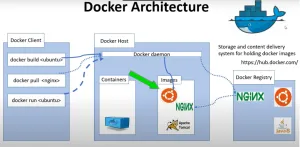
Mastering MySQL: A Comprehensive Guide for Beginners
MySQL is one of the most popular open-source relational database management systems, trusted by developers worldwide for its ease of use and robust functionality. If you're new to MySQL and eager to learn how to manage databases effectively, you've come to the right place! In this comprehensive guide, we'll take you through the fundamentals of MySQL, step by step, so you can confidently start working with databases.
Step 1: Installing MySQL: The first step in mastering MySQL is installing it on your system. We'll walk you through the installation process, whether you're using Windows, macOS, or Linux. We'll also cover different installation methods, including using package managers or downloading the MySQL installer directly from the official website.
Example: Installing MySQL on Windows using MySQL Installer
- Go to the MySQL website and download the MySQL Installer for Windows.
- Run the installer and follow the on-screen instructions to choose the setup type (Typical, Complete, or Custom).
- Select MySQL Server as the product to install.
- Choose a setup type (Developer Default, Server Only, or Custom).
- Follow the prompts to configure the MySQL Server, including setting a root password.
- Complete the installation process and verify that MySQL Server is running.
Step 2: Understanding Databases and Tables:
Once MySQL is installed, it's essential to grasp the basics of databases and tables. We'll explain what databases are, how they organize and store data, and how tables within databases structure information. You'll learn about data types, primary keys, and foreign keys, laying the foundation for creating and managing databases effectively
Example: Creating a Database and Table in MySQL
Open MySQL Workbench or a MySQL command-line interface. Use the following SQL command to create a new database named 'my_database':
CREATE DATABASE my_database;
Switch to the newly created database using the following command:
USE my_database;
Create a new table named 'users' with columns for 'id', 'name', and 'email':
CREATE TABLE users (
id INT AUTO_INCREMENT PRIMARY KEY,
name VARCHAR(50),
email VARCHAR(100)
);
INSERT INTO users (name, email) VALUES ('John Doe', 'john@example.com');
SELECT * FROM users;
UPDATE users SET email = 'new_email@example.com' WHERE name = 'John Doe';
DELETE FROM users WHERE name = 'John Doe';
SELECT * FROM users;
SELECT name, email FROM users;
SELECT * FROM users WHERE name = 'John Doe';
CREATE INDEX idx_email ON users(email);






